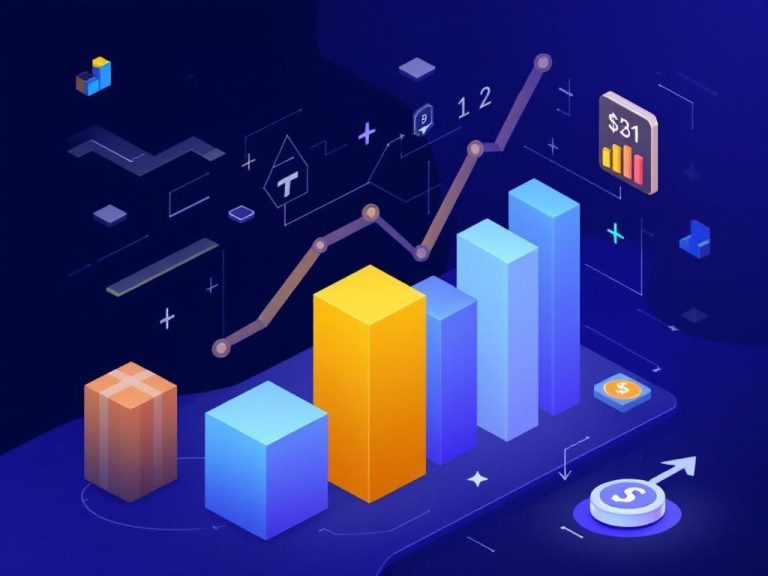In the rapidly evolving landscape of retail and e-commerce, effective pricing strategies have become essential for businesses aiming to maximize their profits. With the advent of artificial intelligence (AI), organizations are now equipped with sophisticated tools that can analyze vast amounts of data, enabling them to set optimal prices dynamically. This article delves into the future of AI-driven pricing strategies, exploring how they are reshaping the industry and the vital role they will play in 2025 and beyond.
The Rise of AI in Pricing
AI technologies have made significant inroads in various business functions, and pricing is no exception. Companies increasingly rely on AI to automate pricing decisions, reduce human errors, and adapt to market changes in real-time. By leveraging machine learning algorithms, businesses can tap into consumer behavior data, competitor pricing, and market trends to determine the most effective pricing strategies.
Key Technologies Driving AI-Driven Pricing
- Machine Learning: Algorithms analyze historical data to predict future pricing trends based on consumer behavior.
- Big Data Analytics: Enables companies to process vast amounts of structured and unstructured data for deeper insights.
- Natural Language Processing (NLP): Helps in understanding customer sentiments which can influence pricing strategies.
- Dynamic Pricing Systems: Automatically adjust prices based on various factors, including demand, competitor pricing, and inventory levels.
Types of AI-Driven Pricing Strategies
As AI technology continues to evolve, various pricing strategies are emerging that allow businesses to remain competitive. Here are some prevalent types of AI-driven pricing strategies that are expected to rise in prominence by 2025:
1. Dynamic Pricing
Dynamic pricing is a flexible pricing strategy where prices are adjusted in real-time based on demand, supply, and other external factors. This strategy is particularly effective in industries like travel, hospitality, and e-commerce.
2. Personalized Pricing
By leveraging AI’s ability to analyze individual customer data, businesses can implement personalized pricing strategies that cater to the unique preferences and behaviors of customers. This approach can enhance customer loyalty and increase conversion rates.
3. Price Optimization
Price optimization involves using AI algorithms to determine the best price point that maximizes profits while considering factors such as cost, competition, and customer willingness to pay.
4. Competitive Price Monitoring
AI tools can continuously monitor competitors’ prices and automatically adjust prices to remain competitive without manual intervention. This ensures that businesses are always in tune with market fluctuations.
Implementing AI-Driven Pricing Strategies
Transitioning to AI-driven pricing strategies requires thoughtful implementation. Here are key steps to ensure success:
- Data Collection: Gather and integrate data from various sources, including sales history, customer interactions, and market trends.
- Choose the Right Technology: Invest in AI tools that align with your business goals and can handle the volume of data required for analysis.
- Develop a Pricing Model: Collaborate with data scientists to design an AI pricing model tailored to your business’s unique needs.
- Continuous Monitoring: Regularly assess the performance of your pricing strategy and make necessary adjustments to improve efficacy.
Challenges of AI-Driven Pricing
While the benefits of AI-driven pricing are considerable, businesses must also navigate various challenges:
- Data Privacy Concerns: Collecting and analyzing consumer data can raise privacy issues that require careful management.
- Integration with Legacy Systems: Many companies still rely on outdated systems that may not easily integrate with advanced AI technologies.
- Algorithmic Bias: AI models can inadvertently reflect biased data, leading to unfair pricing practices.
Case Study: Successful AI Pricing Implementation
To illustrate the effectiveness of AI-driven pricing strategies, let’s look at a fictional case study of a retail company named “SmartRetail.”
Background
SmartRetail struggled with manual pricing processes and relied heavily on historical data without real-time adjustments. This often resulted in missed revenue opportunities and customer dissatisfaction.
Implementation
SmartRetail adopted an AI-driven pricing tool capable of analyzing customer data and market trends. The key features included:
- Real-time price adjustments based on demand fluctuations.
- Personalized pricing for loyal customers.
- Automated competitor price comparison.
Results
Within six months of implementation, SmartRetail experienced the following results:
| Metric | Before AI Implementation | After AI Implementation |
|---|---|---|
| Revenue Growth | 5% | 20% |
| Customer Retention Rate | 60% | 75% |
| Price Adjustment Frequency | Monthly | Daily |
Future Trends in AI-Driven Pricing
As we look towards 2025, several trends are expected to shape the future of AI-driven pricing:
1. Enhanced Predictive Analytics
AI technologies will continue to advance, offering more accurate predictions regarding consumer behavior and market trends, leading to smarter pricing decisions.
2. Increased Focus on Sustainability
Companies will likely adopt pricing strategies that reflect sustainability practices, allowing consumers to make environmentally conscious purchasing decisions.
3. Expansion of AI in Global Markets
Globalization will drive the adoption of AI pricing solutions across different regions, catering to diverse consumer needs and preferences.
Conclusion
The integration of AI in pricing strategies offers a transformative edge for businesses aiming to boost their profitability. By leveraging advanced technologies, companies can develop more responsive, personalized, and effective pricing models. As the market evolves, those who invest in AI-driven pricing strategies are likely to stay ahead, unlocking new pathways to growth and success.
FAQ
What are AI-driven pricing strategies?
AI-driven pricing strategies leverage artificial intelligence algorithms to analyze market data, consumer behavior, and competitor pricing to optimize pricing decisions and maximize profit.
How can businesses benefit from AI-driven pricing strategies in 2025?
In 2025, businesses can benefit from AI-driven pricing strategies by achieving dynamic pricing, enhancing customer segmentation, increasing revenue through personalized offers, and responding quickly to market changes.
What industries can utilize AI-driven pricing strategies?
AI-driven pricing strategies can be utilized across various industries, including retail, e-commerce, travel, hospitality, and manufacturing, to enhance pricing efficiency and competitiveness.
What challenges might companies face when implementing AI pricing strategies?
Companies may face challenges such as data quality issues, integration with existing systems, the need for skilled personnel, and resistance to change from traditional pricing methods.
How do AI-driven pricing strategies improve customer satisfaction?
AI-driven pricing strategies improve customer satisfaction by offering personalized pricing, ensuring competitive rates, and providing timely discounts or promotions that resonate with consumer preferences.
What is the future of AI-driven pricing strategies beyond 2025?
The future of AI-driven pricing strategies beyond 2025 looks promising, with advancements in machine learning, real-time data analytics, and predictive modeling leading to even more refined and effective pricing techniques.



